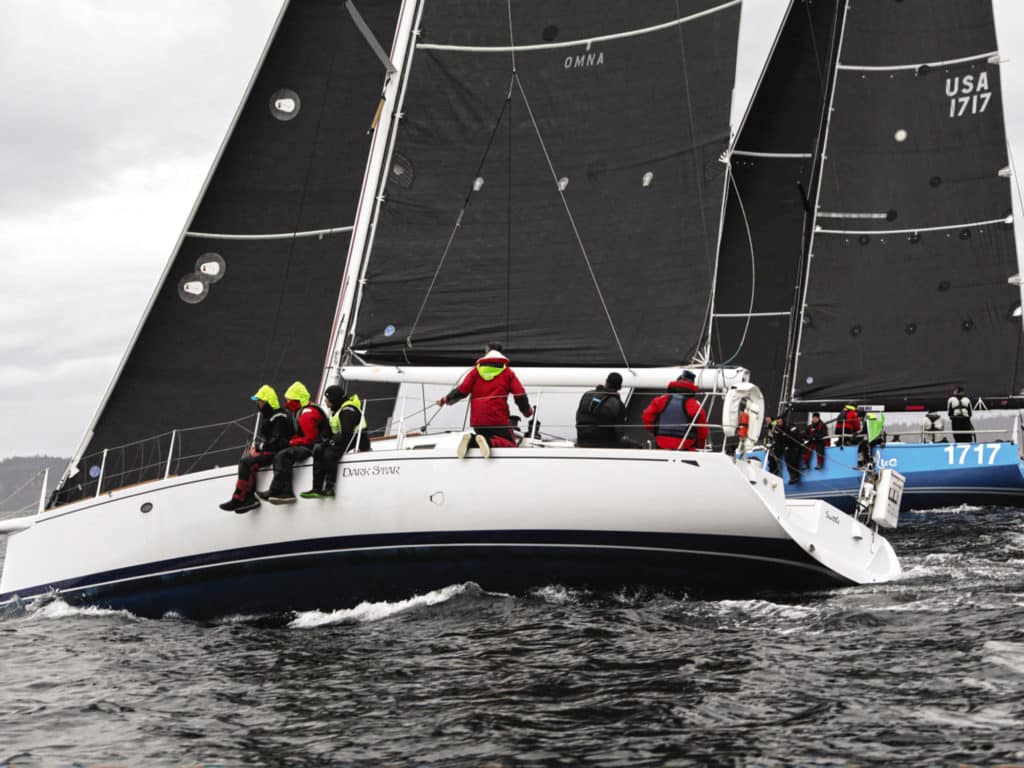
The past two years have been strange ones, on land and on the water. Big-boat racing essentially stopped on Puget Sound in March 2020, stranding any racing ambitions for my teammates and me on the 44-foot Paul Bieker-designed Dark Star. Gradually, I figured out a way to race the boat doublehanded, and a few local events opened to allowing shorthanded crews. It turned out to be a really fun period, but during this time my regular teammates moved on to other boats. I couldn’t blame them as I had nothing to offer.
One of the first fully crewed events on Puget Sound was the Seattle YC’s Grand Prix Regatta in October, and for this important local event I decided to resume Dark Star’s full-team race program, which meant I had to put together a crew, something I had not done for a while. I wondered whether I should simply call up my old mates and get the band back together or try a different approach.
I chose the latter.
In my career as a professional sailor, I have been involved in many new teams and rebuilds. Usually, the motivation of the owner is to reset his or her team, create new energy or a new identity, as well as improve performance. When involved in this process, I think about the skills and experience each crew brings, but also their attitude and team focus. Are they truly interested in learning and improving, and helping the whole team get better? Are they able to admit to their own mistakes? How will they interact with the other crew? Now that I was picking my own team, I had a chance to put these principles to work on Dark Star.
But where to start? First, I needed a trusted lieutenant. Two obvious choices were my longtime friend Jay Renehan and Alyosha Strum-Palerm, a 23-year-old rising star from Tacoma, Washington. Both are expert Tasar sailors and had raced with me on my doublehanded adventures. They were familiar with me and Dark Star. Renehan, however, had just bought a J/111, so he was out. Strum-Palerm eagerly agreed, so we set to filling in the crew.
Next, we had to determine which positions we needed to fill. If we could find a good driver, I was happy to do pit, runner and tactics. Strum-Palerm could steer, but he preferred to trim jibs and kites. While either of us could have chosen to drive, we both felt it would be more interesting to take on other roles and find a good helm. Strum-Palerm suggested we contact Scott Smith, a local legend who is one of the most talented and experienced sailors around. I called him and he eagerly agreed. Now we had a first-class helm who was also a good starter. But he is my age, and it’s always good to get some young blood into a program.
The next day, the phone rang. It was my friend David Schmidt, who called to ask about racing on Dark Star, and whether there were any races coming up. Schmidt had done mast and midbow for Dark Star for years, back when we had a full crew. He knew the job, and is super-enthusiastic and in great shape—perfect. He also mentioned that his friend Chris Burd was looking to go sailing again. Burd is young and super-fit, but he’s also experienced on the bow. He was a previous winner of the Race to Alaska, so he was clearly fearless and tough as well—I like that in a bow person.
The crew was coming together nicely. I had the young gun, the grizzled veteran, the eager and athletic mast person, and the rock-solid bow person. But who could trim the main, probably the most important job on the boat? I asked Stasi Burzycki, the son of an old friend of mine and an up-and-coming Tasar talent. I realized it would be a stretch for him to trim main on a technical boat like Dark Star because most of his experience was with dinghies, but I knew he had the focus and the feel. He eagerly agreed, and the roles were filled.
We sailed two afternoons in October as practice, and it was clear we had all the pieces to succeed with our six-person squad. We worked together well, everyone got along, and there was a lot of mutual respect. For the Grand Prix, we faced a small but competitive fleet of similar boats, and the regatta had great conditions. We ended up tied for first and won the tiebreaker.
After the awards, I reflected on the qualities that had created a strong team: We had no big egos (except maybe mine), but everyone had enough experience to do their job well. Equally important, each crew had to stretch their skills to really excel. We all trusted each other to do our job well while also helping each other improve. This combination of trust, experience and continuous learning keeps it fun and rewarding while still challenging. It was satisfying to be part of a new group coming together so smoothly. Even if we had not won the Grand Prix, it was still amazing to see each of us have a great sailing experience, becoming better sailors—and a better team
—along the way.
Maybe you are looking to change up your team for the next season. I would suggest following a similar approach: Find good sailors, maybe even some younger ones, but make sure they have the right attitude, and think about how they will work together. Pick a team that can have fun but also help each other improve every time you sail. Then cultivate a culture of respect and continuous learning. Like me, you will find yourself smiling every time you step on board your boat.









